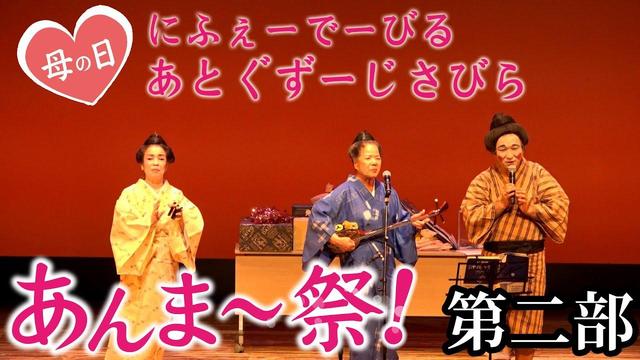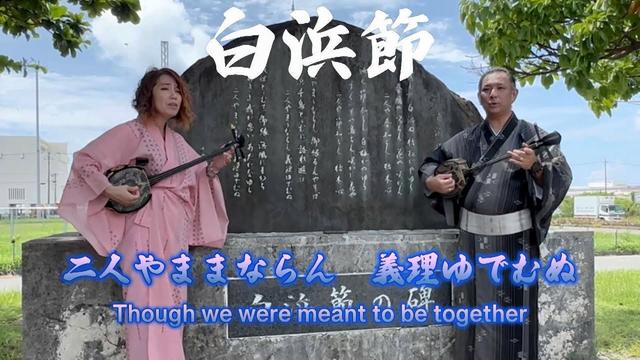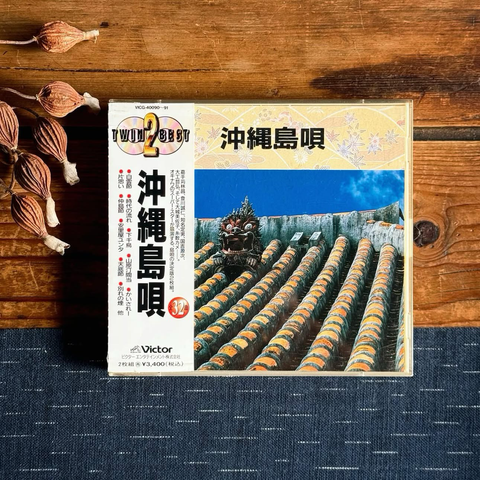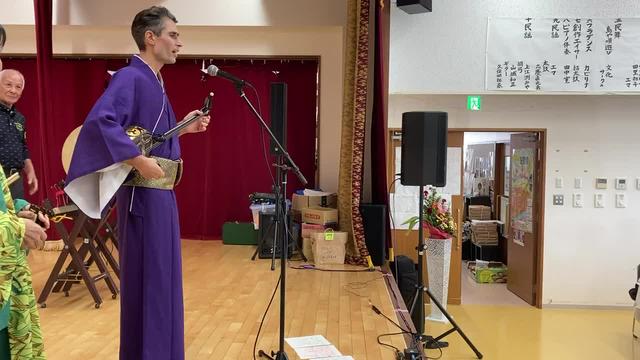--- english ---I came to the island of #
Okinawa this May to learn its folk songs (
‘uchinaa min-yō’ or simply
‘min-yō’) and traditional dances. A
min-yō singer sings (
‘uta’) and plays the three-stringed lute
sanshin at the same time. This double role is called
#utasanshin. This double role is also central to the courtly (
‘koten’) music of Okinawa. Before that, I had already learnt
min-yō and
eisa (a type of traditional Okinawan dance) self-taught in Switzerland and then regularly gave group lessons in
eisa and
min-yō. I was the only teacher for both in Switzerland. If you learn without a teacher, you get stuck at a certain level and it's difficult to develop in areas of finesse. But I wanted to develop further, and for that I needed good teachers. I have now found them in Okinawa. I learn
min-yō from Kamiya Kōichi, who is the best teacher for me. I learn the traditional dances from different people.
I enjoy singing and dancing together. I don't necessarily need a stage for that. What this certainly needs is a gathering of people. The more of them actively sing or dance along, the happier I become.
I am interested in the traditional songs and dances because I recognise in them a truthfulness and deep wisdom that can only emerge through the maturity and cultivation by dozens of generations. In contrast to Switzerland, where such songs and dances are hardly practised any more, Okinawa has a significant proportion of the population that practises them. This practice is very visible to the public.
If I compare my skills with those of my teachers here on Okinawa, I am clearly still a beginner. The kind of maturity that characterises my teachers can only be achieved through decades of practice. However, such maturity is my goal. It will take me decades to get there.
I really like teaching. I am aware that there are many more suitable teachers than me here on Okinawa. But every teacher has their own unique qualities. Who knows, maybe one day I will be your teacher?
--- 日本語 ---私は今年の5月に沖縄の民謡と伝統的な踊りを学ぶために沖縄に来ました。それ以前は、スイスで独学で沖縄民謡とエイサーを学び、両方を教導しました。どちらもスイスで唯一の先生でした。先生なしで学ぶと、ある一定のレベルで止まってしまい、繊細な部分を伸ばすのが難しくなります。しかし、私はもっと成長したかったし、その為には良い先生が必要でした。私は今、沖縄でその様な先生を見つける事が出来ました。民謡は神谷幸一先生から習っています。伝統的な踊りもいろいろな人から習っています。
一緒に歌って踊るのが楽しいです。その為に必ずしも舞台が必要なわけではありません。確かに必要なのは人の集まりです。積極的に歌ったり踊ったりしてくれる人が多ければ多いほど、私は嬉しくなります。
私が伝統的な唄や踊りに興味を持つのは、そこに何十世代にも渡って熟成され、大切にされてきた物だけが持つ真実味や深い知恵を感じるからです。この様な唄や踊りを殆ど実習しないスイスとは対照的に、沖縄ではかなりの割合の人々が実習しています。その実習風景は、一般の人々にもよく見えます。
沖縄の先生方と私の技量を比べても、まったく意味がありません。なぜなら、私はここでは明らかにまだ初心者だからです。私の先生方を特徴づける様な成熟は、何十年もの練習を経なければ達成できません。しかし、その様な成熟が私の目標です。そこに到達するには何十年も掛かるだろう。
私は教えることが本当に好きです。ここ沖縄には、私よりも相応しい先生がたくさんいる事は承知しています。でも、どの先生にもそれぞれの良さがあるんでしょう。何時か私があなたの先生になるかもしれませんよ。
#
沖縄 #
沖縄民謡 #
唄三線 #
minyo #
uchinaa-minyo 


